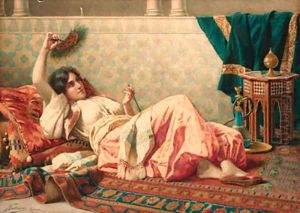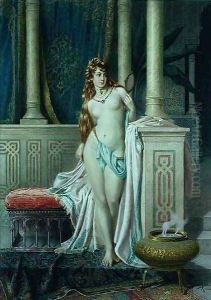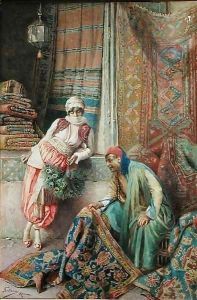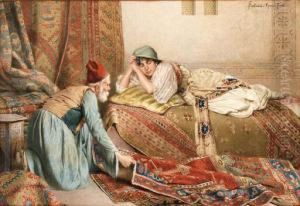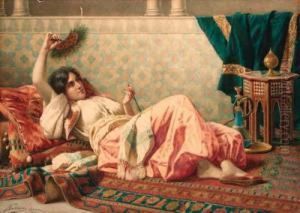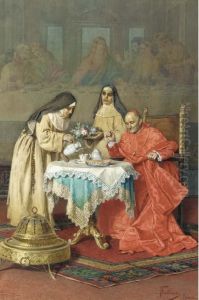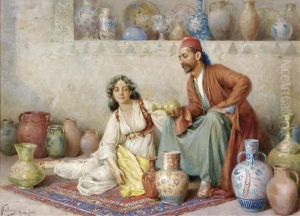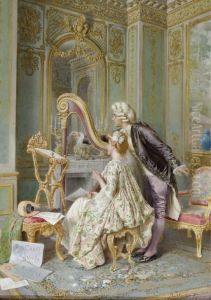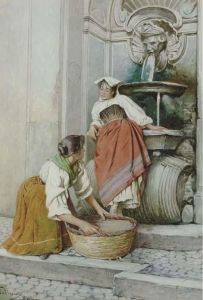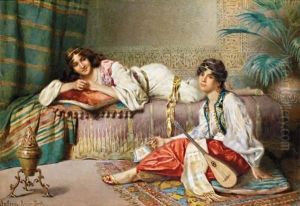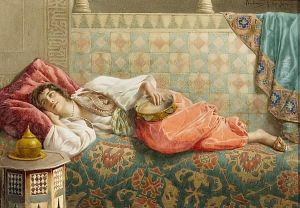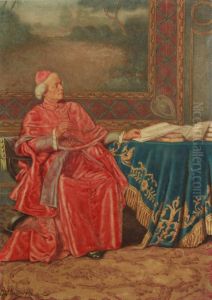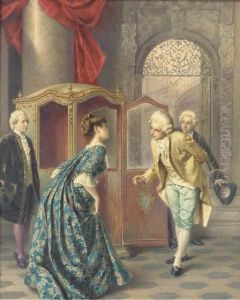Federico Ballesio Paintings
Federico Ballesio, born in Turin, Italy, in 1860, was a notable Italian painter known for his genre scenes, often depicting elegant interiors and the daily life of the bourgeoisie with a particular emphasis on female figures. His works are characterized by a meticulous attention to detail, vibrant color palette, and a keen observation of light effects, showcasing his mastery in capturing the texture of fabrics and the interior ambiance of the period.
Ballesio received his formal art education at the Albertina Academy in Turin, where he was influenced by the realism and attention to detail that characterized the Italian painting tradition of the time. He was particularly inspired by the 19th-century Italian genre painters, who focused on scenes of everyday life, but Ballesio distinguished himself through his specialization in interior scenes that often carried a sense of intimacy and quiet elegance.
Throughout his career, Federico Ballesio participated in numerous exhibitions, gaining recognition and accolades for his work both in Italy and internationally. His paintings were sought after by collectors and art enthusiasts, who appreciated his ability to convey the nuances of bourgeois life with both accuracy and aesthetic appeal.
Ballesio's artistic output includes not only scenes of daily life but also portraits and still lifes, each demonstrating his versatility and skill as a painter. Despite the popularity of his genre scenes, his portraits also reveal his ability to capture the character and essence of his subjects with sensitivity and depth.
The artist's legacy is preserved in various collections and museums, where his works continue to be admired for their beauty and historical value. Federico Ballesio's contribution to the Italian art scene of the late 19th and early 20th centuries remains significant, as he captured an era with both precision and poetic grace. He died in 1923, leaving behind a body of work that continues to enchant and inform viewers about the cultural and social dynamics of his time.
